
Date of visit: August 23rd, 2017
Weather: Sunny
Hello, everyone! This is Narorin♪
In this Narorin Report or Naroripo, I will tell you about my visit to Western Region Agricultural Research Center(Kinki, Chugoku and Shikoku Regions), NARO (WARC/NARO) in Fukuyama city, Hiroshima Prefecture.
Under the scorching hot and glaring sunlight, I saw green rice paddies and fields spreading out across the horizon!
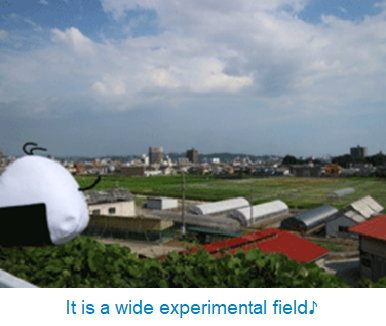
Ta-dah! These are the products of WARC! You can see cooked rice in the white bowl in front of a PET bottle of barley tea. It is "Koinoyokan", a rice cultivar which is bred here in Fukuyama♪
It is said to be delicious even in the year when the temperature is unusually high.
The small serving of rice (in the middle of the tray) is "Koinoyokan" mixed with "Kirarimochi", a barley cultivar♪
It is very delicious, even after some time, and the color of barley grains remains pure white like Narorin!
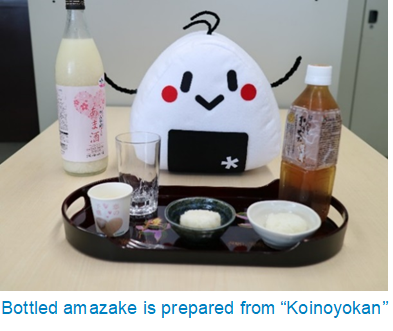
And now, where is Narorin?
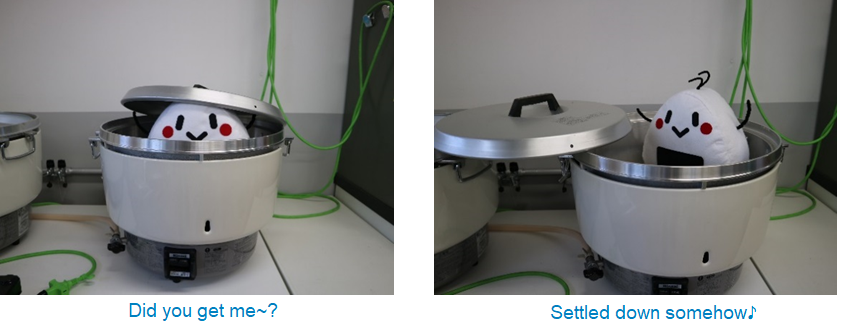
Yes! I'm inside the rice cooker for laboratory use!
Using this big pot, several cultivars of rice are cooked at the same time in separate containers to compare the difference in taste and aroma of each cultivar.
It is called tasting experiment! I want to try it ~
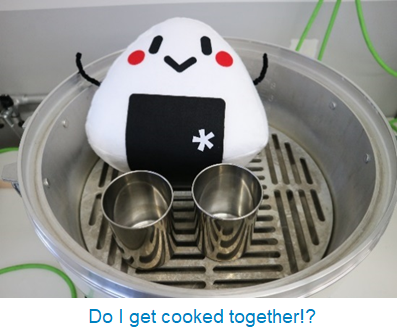
Yes! This time I visited the rice breeding laboratory.
In addition to rice cultivars used at home and restaurants, they also develop cultivars with suitable traits for livestock feed.
Today I learned about forage rice from Dr. Nakagomi, Senior Researcher of the Rice Breeding Group!!
Forage rice has to be grown as tall as possible, shredded finely, fermented, and fed to cattle so that harvesting is very difficult.
On the other hand, if we want to get seeds, the rice plants must be shorter and cultivated until late in the growing season♪
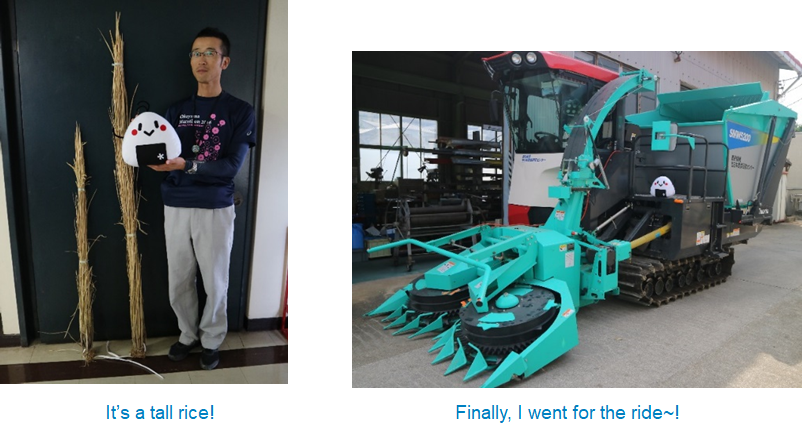
For harvesting forage rice, this machine can cut and shred whole rice plants at the same time during harvesting♪
I also had the chance to ride in it!
"Tachisuzuka", the main forage rice cultivar in western Japan, was bred here! Since cattle is not good at digesting grains, researchers selected rice that grow tall and produce few grains repeatedly for many years. And "Tachisuzuka" for cattle feed was born ♪
However, it is susceptible to rice blight disease, and it is not suitable for cultivation in ares often infested by this disease. So, Dr. Nakagomi and his group developed a new forage rice plant overcoming the weakness of "Tachisuzuka". I also learned about crop breeding♪
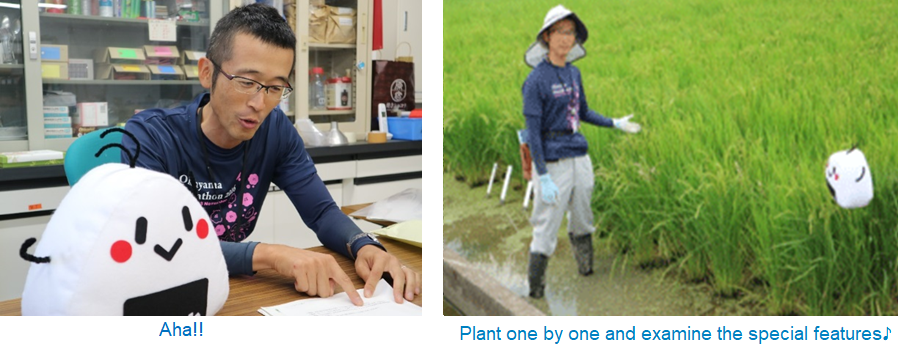
When the cultivar they developed themselves came out, they were very happy!
This is the flower of rice (picture below)!
It's my first time to see a flower of rice. The white part is the stamen and it has no petals!
The flowers usually bloom in the morning. I came in the afternoon, so unfortunately, I missed the rice flowers in full bloom.
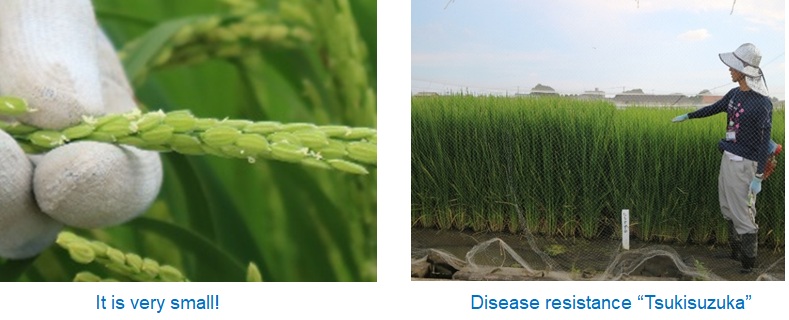
Thus, based on "Tachisuzuka", a new cultivar "Tsukisuzuka" has been bred!
This cultivar has the good qualities of "Tachisuzuka" and resistance against rice blight disease♪
This time, the plants grow fine and healthy!
I hope that "Tsukisuzuka" will be grown in various regions!
Look, look!!
A beautiful rice field art! Saw it on our way back.
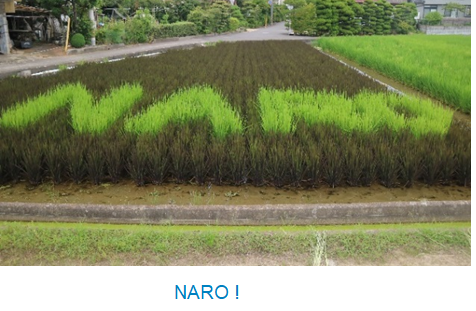
Finally, a picture with the researchers and staff.

Now I'm wondering where to go next...
Check here for further details about the Western Region Agricultural Research Center(Kinki, Chugoku and Shikoku Regions), NARO.